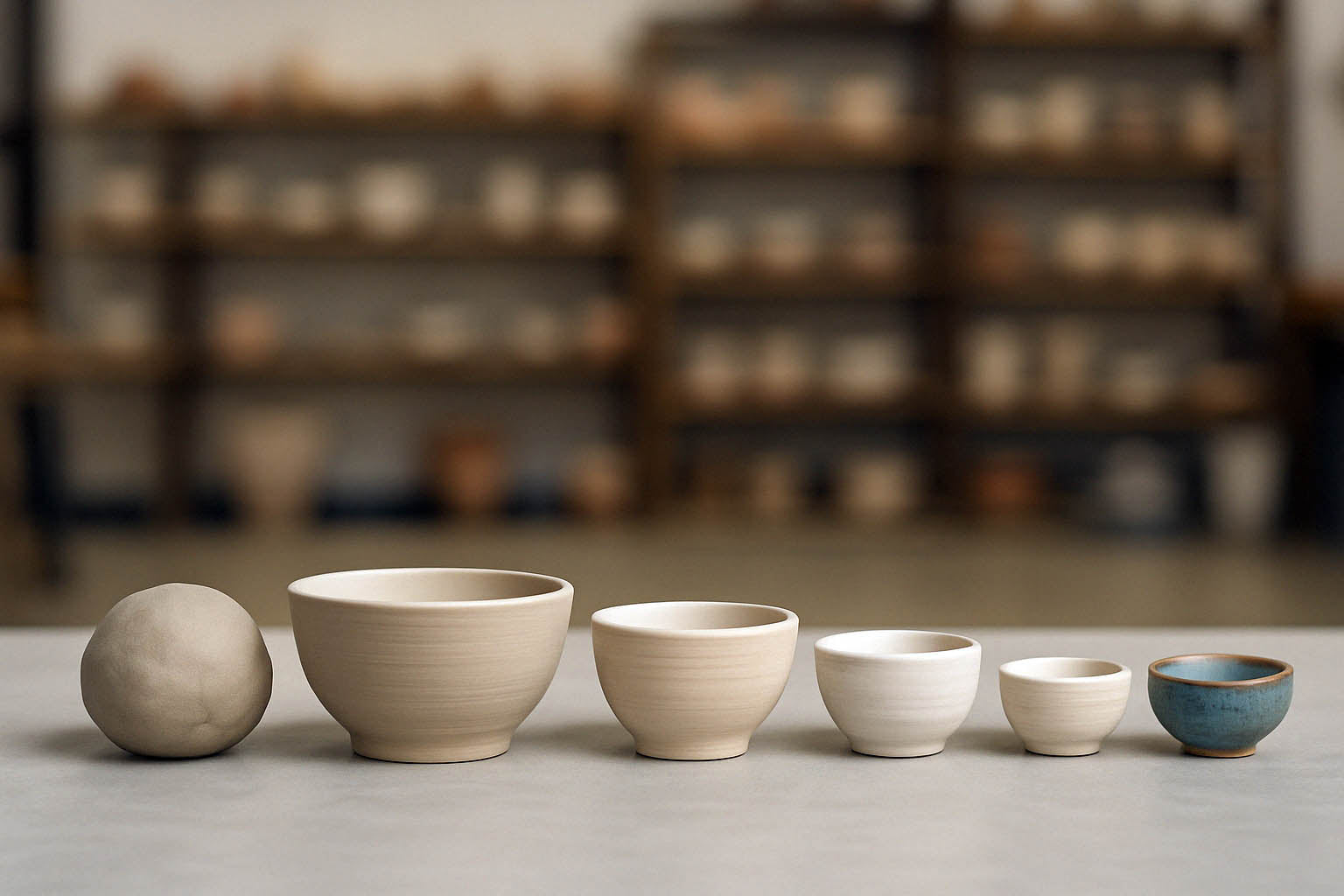
The Full Process of Pottery: From Ball of Mud to Finished Piece
This is the simplified version of the complete pottery process. Read the more in-depth full version.
Pottery is magic—but it’s a process. Whether you’re brand new or just curious what actually happens between bagged clay and a gorgeous glazed piece, this guide will walk you through every stage of the journey.
1. Start with Fresh Clay
Every pottery piece begins with a block of moist clay—usually stoneware or porcelain. At The Clay Hole, we offer 8 types of clay for different textures and finishes. You’ll slice off a chunk and knead it through a process called wedging to remove air bubbles and align particles.
2. Shape It (Wheel or Hand-building)
Once wedged, clay can be shaped in a few ways:
- Wheel Throwing: Centered on a wheel, then pulled and formed into symmetrical pieces.
- Hand-Building: Sculpted or assembled with slabs, coils, or molds.
This is where your imagination takes form—bowls, mugs, vases, or wild creatures you dream up at 3am.
3. Drying: From Wet to Leather-Hard
After shaping, the piece needs to dry slowly to a stage called leather-hard. It’s still moist but firm enough to carve or add handles. At this stage, we do trimming, attach pieces, and refine form. Drying too fast causes cracks, so patience is key.
4. Bisque Firing
When fully dry (called bone dry), pieces are loaded into the kiln for their first firing—called bisque. This removes all chemical water and hardens the clay into ceramic form. The piece comes out porous and ready to accept glaze.
5. Glazing
Now the fun begins again. We dip, pour, or paint on glaze—liquid glass that will melt and fuse in the final firing. At The Clay Hole, you’ll have access to over 500 commercial glazes and 100+ underglazes, including rare combos you won’t find anywhere else.
6. Glaze Firing
Glazed pieces go back into the kiln for their second firing—this time up to cone 5 or cone 6 (about 2160°F+). During this phase, the glaze melts and bonds to the clay body, becoming durable, glossy, and food-safe.
7. Your Finished Piece
When the kiln cools, the transformation is complete. What began as a ball of clay is now a finished, vitrified, functional piece of art. And every mug, bowl, or sculpture holds the imprint of your hands—forever.
Try the Full Process at The Clay HoleFAQs
How long does the full pottery process take?
From start to finish (including drying and two firings), most pieces take about 10–14 days to complete.
Can beginners do all of these steps?
Absolutely. Our instructors guide you every step of the way in our weekly classes—no experience needed.
